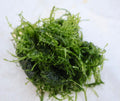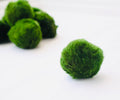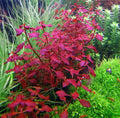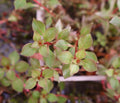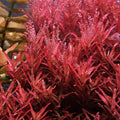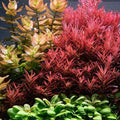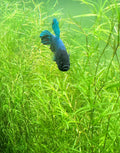How to Make Your Aquarium Plants Beautifully Red Without Extra Iron!
In this post, we are going to talk about the actual methods to get your plants beautifully red. And no, it’s not going to be by dosing or supplementing more iron.
The Basics: Healthy Plants First
Before I dive into the three methods of making your plants red, it’s crucial to go over the basics of healthy plant growth. Plants that aren’t healthy will never show their true vibrant red color. So, let’s start with what you need to ensure healthy plant growth:
Strong Light
Nutrient-Rich Substrate
Good Flow
CO2 Injection
Fertilization
Maintenance
Here are some specific basics I recommend:
RGB Light with at least 30-40 lumens per liter
Aquasoil (brands like Tropica, ADA, or Aquario)
External Filter with a turnover of at least 5 times the volume of the aquarium
CO2 Injection with a pressurized system and enough bubbles per second to make the drop checker turn green
A Lean Fertilization Routine
Weekly 50% Water Changes
If you think you’ve got the basics covered, then let’s move on to the exciting part—how to get those plants nice and red!
Method #1: Strong Light
The first method for getting red plants is strong light. More light means your plants can grow more vibrantly red. But there’s a catch—strong light can also lead to algae growth. So, if you’re not maintaining your tank well or not injecting enough CO2, then increasing the light above your tank could just lead to problems with algae instead of helping your plants grow red.
What is “strong light”? Well, technically, you'd need a PAR meter to measure the Photosynthetically Active Radiation (PAR). A PAR level of 100 at the substrate is considered strong light. But, most of us don’t have a PAR meter, so I use lumens as a guideline. Aim for around 50 lumens per liter of water.
For example, my 70-liter scaper’s tank uses the Chihiros WRGB 2, which produces a total of 3600 lumens. Dividing 3600 by 70 gives 51 lumens per liter, which is perfect! The more light you have above your tank, the stronger the red colors will become.
Method #2: Red and Blue Spectrum in Light
The second method to enhance red plant growth is by adding more red and blue spectrum light. Both red and blue light will help promote better pigmentation, making your plants look more colorful and intensifying the red hues. However, you need to be careful with how much red and blue you use. Too much of this spectrum can make your plants (and tank) look unnatural.
Most of my tanks use RGB lights, which have different colored LEDs or adjustable colors via an app. Consider the Chihiros lights, as they are easy to use and very effective at growing red plants.
This doesn’t mean you can’t grow red plants with just white LED lights, but under RGB lights, the colors will look much more intense and vibrant.
Method #3: Nitrate Limitation
The third method is nitrate limitation. This technique involves dosing very little or no nitrates at all. The lack of nitrogen makes it harder for the plants to produce chlorophyll. And this is the reason why it forces them to grow more intense red colors. You can’t just always use any all-in-one liquid fertilizer here; you will definitely need a fertilizer that doesn’t contain nitrogen.
However, not all plants will turn red under nitrate limitation. Some plants need a little bit of nitrate to grow red, while others need the nitrate level to be as close to zero as possible. It also depends on factors like light intensity, plant mass, and the type of substrate you have.
Pro tip: Only try nitrate limitation if you have a nutrient-rich substrate. If the plants can’t get nutrients from the substrate and you’re not providing them nitrogen, they may stop growing altogether, and you might end up with algae.
What About Iron?
Now, let's address iron. Yes, every plant needs some iron to grow properly and develop pigment, but dosing extra iron will not make plants more red. It’s always good to supplement your plants with iron, but a little bit goes a long way. In fact, I’ve found that adding too much iron can lead to excess algae growth, especially black brush algae.
Focus on light intensity, preferably with some red and blue light.
Lower your nitrates if your plants need it (this depends on the plant species).
Iron is important but not the main factor for getting red plants.



